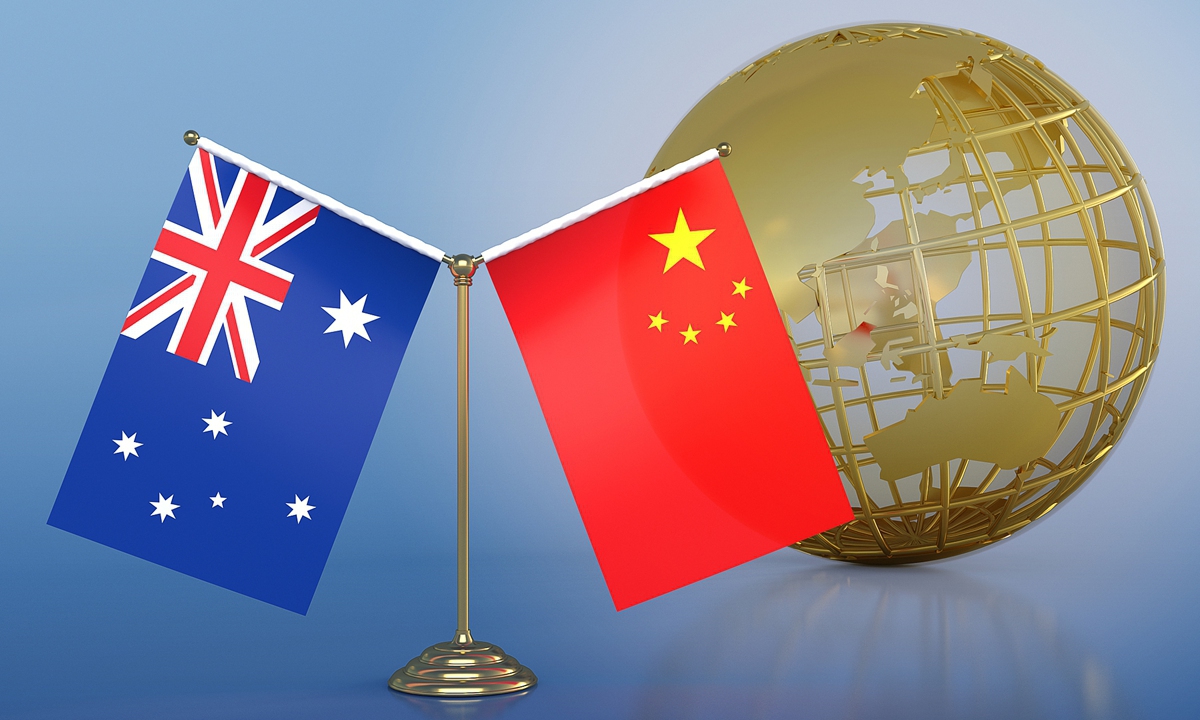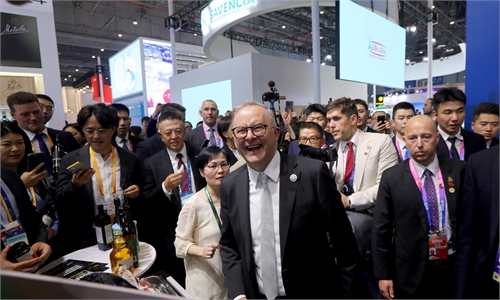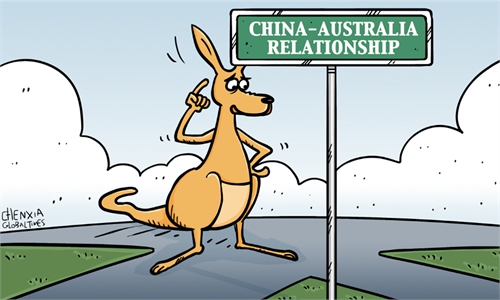
China Australia Photo: CFP
The bilateral trade between China and Australia in the first 10 months of the year has shown a positive growth of 4 percent year-on-year, and China's imports from Australia increased by 8.4 percent compared to the previous year, according to the Chinese customs data released on Tuesday. This data suggests that the bilateral trade cooperation, which had faced setbacks in recent years, is gradually recovering and stabilizing.The leaders of China and Australia agreed to enhance the bilateral trade relationship during a meeting in Beijing on Monday. This development paves the way for both countries to actively promote trade recovery and facilitate business opportunities between their respective business communities.
During his visit to China, Australian Prime Minister Anthony Albanese participated in the ongoing sixth China International Import Expo (CIIE) in Shanghai. As the bilateral relationship between the two countries continues to improve, there are positive expectations for the further recovery and strengthening of economic and trade cooperation.
Corresponding with the improving trade numbers, China and Australia have recently fostered a series of positive interactions in the economic and trade sectors. The Spokesperson of China's Commerce Ministry said on October 22 that after having been engaged in amicable negotiations to address trade disputes concerning wine and wind towers, both sides reached a consensus on an appropriate settlement of the disputes within the framework of the World Trade Organization (WTO).
China in August lifted anti-dumping tariffs and countervailing duties on Australian barley. China has been the largest market for Australia's barley exports, making this decision a positive step toward restoring trade ties. Australia has ruled that there are no security risks associated with the Chinese company's lease of the Port of Darwin, thus giving the green light to the Chinese company's continued operation of the port.
Despite some anti-China politicians in Australia, who have been under the US influence, are still making noises attempting to disrupt economic and trade cooperation between China and Australia, the Albanese administration has realized that stabilizing China-Australia relations by taking more pragmatic moves in bilateral economic exchanges is conducive to Australia's economy.
The Albanese administration's moves to repair Australia's relationship with China are in line with public sentiment in Australia, especially the business community. During Albanese's visit to China, both sides reaffirmed the importance of the China-Australia Free Trade Agreement, agreed to promote economic and trade relationship, including holding the joint commission conference for China-Australia FTA in Australia as soon as possible.
Recently, the Vaughn Barber, chairman of AustCham China said that Australian corporate executives are once again "flocking to China." There are abundant opportunities in the Chinese market, and China keeps improving the business environment and ramping up efforts to attract foreign investment.
A record number of Australian companies are attending this year's CIIE as the relations between China and Australia are being restored. The cornerstone of the China-Australia relation is economy and trade. Trade between the two countries in agricultural and mineral products, primary products, and the service sector has been active, and trading volumes have been record-breaking.
China is Australia's largest trading partner, with bilateral trade accounting for 28 percent of Australia's total foreign trade in 2022. As the complementarity between the two economies continues to strengthen, the importance of the Chinese market will become even more significant. Not only does China have a vast market size, but it is also embarking on a path of high-quality development. There is still enormous untapped potential for expanding economic and trade cooperation between China and Australia.
As the Australian government has set up a goal to reach net zero carbon emissions by 2050, Australian companies are looking forward to further cooperating with China in clean energy. Australia has abundant solar, wind energy and lithium ore, but local companies have inadequate capacity to produce and maintain clean energy equipment. Given China's advantage in related products manufacturing, there are great opportunities for the partnership between China and Australia in this field.
The author is a reporter with the Global Times. bizopinion@globaltimes.com.cn



